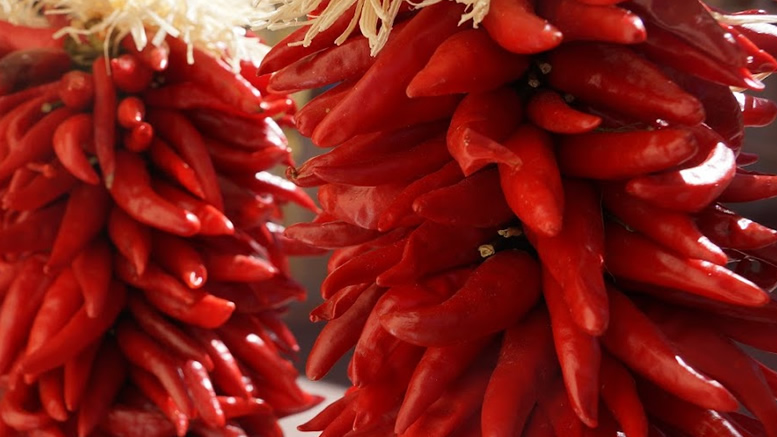The chili, a member of the Capsicum family, shares ancestry with tomatoes in the nightshade family. Cultivated since prehistoric times in Peru and Mexico, it was introduced to the Caribbean by Columbus, earning the name “pepper” due to its resemblance to Old World peppers. Diego Alvarez Chanca, a physician on Columbus’ second voyage, brought the first capsicums to Spain in 1493, noting their medicinal effects.
The fruit is boxlike, conical, or spherical and filled with air. It has 2 to 4 vertical ribs on the inside, which may carry seeds, but the bulk of the seeds are on a dome at the stem end. Capsicums vary in horticulturally ripe color and may be green, yellow, orange, bright red, lavender, brownish purple, or other colors depending on the variety and stage of botanical ripeness.
Only a handful of the many species of Capsicum are cultivated, but there are many cultivars and methods of preparation with different common names. C. annuum includes bell peppers, pimentos, paprika, and poblano, jalapeño, Anaheim, New Mexico, and Serrano chiles; C. frutescens includes cayenne, tabasco, arbol, aji, pequin, and cherry chiles; C. chinense includes the hottest chiles such as habaneros and Scotch bonnets; C. pubescens includes the South American rocoto; and C. baccatum includes the chiltepin.
The substances that give chiles their heat are the lipophile alkaloid capsaicin (8-methyl-N-vanillyl-6-nonenamide) and four related chemicals, collectively called capsaicinoids. Each capsaicinoid has a different effect on the mouth, and variation in the proportions of these chemicals is responsible for the differing sensations produced by different varieties. Capsaicin causes pain and inflammation if consumed to excess and can even burn the skin on contact in high concentrations (habaneros, for example, are routinely picked with gloves). It is also the primary ingredient in pepper spray, which is used as a defensive weapon. The “heat” of chiles is measured in Scoville units. Bell peppers rank at zero Scoville units, jalapeños at 3,000-6,000 Scoville units, and habaneros at 300,000 Scoville units. The record for the highest number of Scoville units in a chile is assigned by the Guinness Book of Records to the Red Savina Habanero, measuring 577,000 units!
The hot flavor of chiles is concentrated at the stem end of the fruit, where the white placental tissue produces capsaicin, which then flows downwards. Removing the seeds and inner membranes is thus effective at reducing the heat of a chile.
In Asian cuisine, chilies hold a revered status, imparting not only heat but also complex flavors to dishes. From fiery curries to spicy stir-fries, chilies are indispensable ingredients that elevate the taste profile of countless Asian recipes. Varieties like Thai bird’s eye chilies, Korean gochugaru, and Indian Kashmiri chilies each bring their unique characteristics to regional dishes, showcasing the diverse culinary landscape of Asia. Whether dried, powdered, or used fresh, chilies add depth and intensity to Asian cooking, making them a cornerstone of the region’s vibrant gastronomy.

